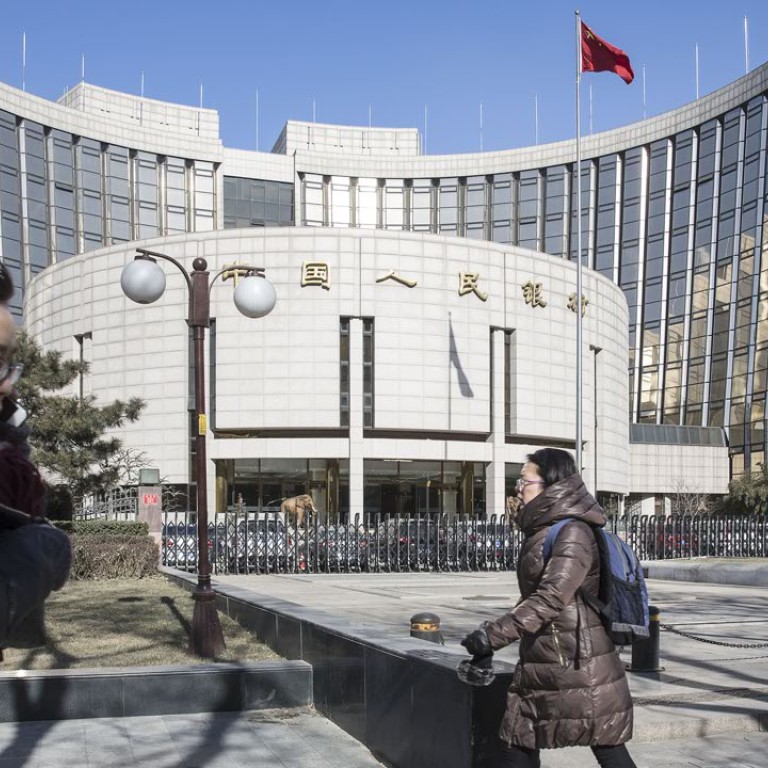
Update | China's central bank trapped in horns of a dilemma as it seeks to ward off deflation risks
PBOC is walking a fine line between lowering lending rates and defending exchange rate, analysts say
The People’s Bank of China is using short-term liquidity injections as a substitute for a relaxation of the required reserve ratio (RRR), a move intended to avoid further weakening expectations on the currency, while analysts say it is just a makeshift policy which may add to deflation risks.
The exchange rate of China’s yuan against the US dollar seemed to stabilise last week after the dreadful gyration during the first two weeks of 2016. The stock market also reversed a three-week losing streak to end 0.54 per cent higher on Friday.
In a meeting held with nationwide commercial banks last week, the PBOC’s assistant governor Zhang Xiaohui said paramount importance should be placed on “maintaining the stability of renminbi while managing liquidity”, while a cut to the RRR would send “too strong an easing signal” that put more downward pressure on yuan.
In a bid to stem capital outflows and depreciation of the currency, the PBOC is upholding the differentiation between the onshore and offshore interest rates, by avoiding more interest rates cuts, and using only policy tools to pump liquidity into the interbank market.
The PBOC’s has injected 1.3 trillion yuan (HK$1.54 trillion yuan) since January, through open market operations, and used policy tools that including the standing lending facility, medium-term lending facility and pledged supplementary lending, according to calculations by ING.
“The number is already above last year’s 1.1 trillion yuan with two weeks to go before financial markets close for the holiday. We assume more will be needed to compensate for larger hot money outflows this year,” ING said.
The PBOC’s worry is justified in light of what happened after the October 23, when it lowered the required reserves and policy interest rate . The cuts widened the USDCNH premium to USDCNY and the USDCNH forward curve blew out like it did after August 11, ING financial market research said in a note on Monday.
In keeping with its stated goal to make the yuan more free clean float of yuan, and further enhance its convertibility, the PBOC widened the daily trading band of yuan on its onshore market and devalued the currency by 2 per cent on August 11.
It also introduced the CFETS basket in mid December, discouraging investors from exclusively tracking the yuan’s fluctuations against the US dollar.
The moves adopted by the PBOC so far since last year, in a bid to add free float of the currency, “all heightened expectations for deprecation of yuan and led to market turmoil,” Liang Hong, chief economist with China International Capital Corporation wrote in a note on Monday.
Wang Tao, chief economist with UBS, said the PBOC was currently facing some difficulties in its policy conduct.
“While a key original motive behind the August 11 exchange rate move may have been to increase the flexibility of the exchange rate so as to gain more independence from the US Fed’s monetary policy, the PBOC seems to be choosing not to ease monetary policy too much so as to stabilise the exchange rate,” she said in a note Friday.
In addition, as interest rates are more liberalised and some regulations are relaxed, the PBOC seems to be having some difficulties to manage the quantity of credit extension, the note said.
While the onshore-offshore interest rate differential has been closely tied with capital flows, it is the exchange rate expectation that matters more, Wang said.
“We think short-term rates should come down further in light of mounting deflationary pressure and rising debt burden in the economy, especially the corporate sector,” she added.
Hong Hao, chief strategist with Bocom International, said the yuan’s weakness will likely limit the leeway of easing. As such, deflationary pressure will likely be greater.
“As the exchange rates of yuan calm after recent interventions, stocks are likely to stabilise, and can even stage a technical rebound in the near term. Recovering oil prices amid the epic snow storm will also help, and non-commercial traders have already cut their bets,” he said in a note on Monday.
But the bearish trend is yet to end, as fundamentals can deteriorate further. The Hang Seng is likely to make a second low after a reprieve - similar to its trading pattern between 1997 and 1998, he added.
The volatilities of spot exchange rates in both onshore and offshore markets have declined significantly, with the central parity rate appreciating modestly at 6.5557 against the greenback on Monday, mainly driven by the central bank’s stepped-up efforts to buy yuan and sell US dollars on the foreign exchange markets, and crack down on cross-border arbitrage.

